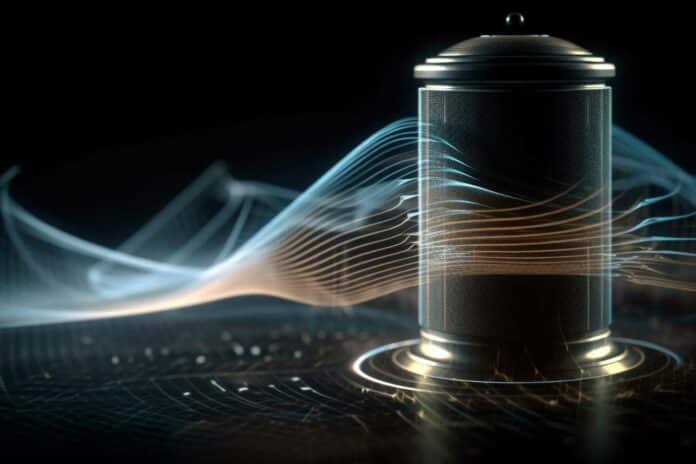
10 Apr, 2024 by Amit Malewar
Collected at : https://www.techexplorist.com/novel-type-battery-gathers-stores-electricity-remote-settings/82861/
Scientists from the University of Utah’s College of Engineering have developed a novel type of battery called a photoelectrochemical cell (PEC). PEC harnesses changes in ambient temperature to gather and store energy. It charges itself and could be used in ‘Internet of Things‘ applications.
Roseanne Warren, associate professor of mechanical engineering, said, “It’s our idea for an integrated device that could harvest ambient thermal energy and convert it directly into stored electrochemical energy in the form of a supercapacitor or battery with applications for the Internet of things and distributed sensors.”
“We’re talking very low levels of energy harvesting, but the main advantage is the ability to have sensors that can be distributed and not need to be recharged in the field. We explored the basic physics of it and found that it could generate a charge with an increase or a decrease in temperature.”
To devise the PEC, scientists used a pyroelectric composite material as the separator in an electrochemical cell. The material is made of porous polyvinylidene fluoride (PVDF) and barium titanate nanoparticles. When heated or cooled, the electrical properties of the material change, decreasing or increasing the polarization of the pyroelectric separator.
The temperature change generates an electric field in the cells, pushing ions around and enabling the cell to store energy.
Lead author Tim Kowalchik, a graduate student in Warren’s lab, said, “It stores electricity in an electric double layer, which stores the charge in positive and negative layers of ions. This is a glorified capacitor. When you heat and cool the system and store electrochemical energy, you’re changing the amount of positive or negative ions in those layers.”
“We had a predicted model of function that included an ‘orientation effect’ in the paper. Changing the reverse orientation of the separator in the cell should drive ions the other way. This is a change we can make to the system that will show a different result that we can gather.”
During the experiment, scientists determined whether the cells would respond as they predicted. In addition to the orientation effect, heating vs. cooling effects needed to be tested.
Kowalchik said, “If you heat the thing one way, you should get something to happen. If you cool it first, you should get something to happen, which should show up differently. We did that with a process called amperometry. You put a voltage across it, hold it constant, and measure current. Your energy into the system is constant if nothing changes; if energy goes into the system, the current changes.”
The cell responded as it was theorized. Now, scientists are looking forward to commercializing it. To do so, they have started changing different parameters to improve energy harvesting and storage.
Journal Reference:
- Tim Kowalchik, Fariha Khan et al. Direct conversion of thermal energy to stored electrochemical energy via a self-charging pyroelectrochemical cell. Energy & Environmental Science. DOI: 10.1039/D3EE03497F

Leave a Reply